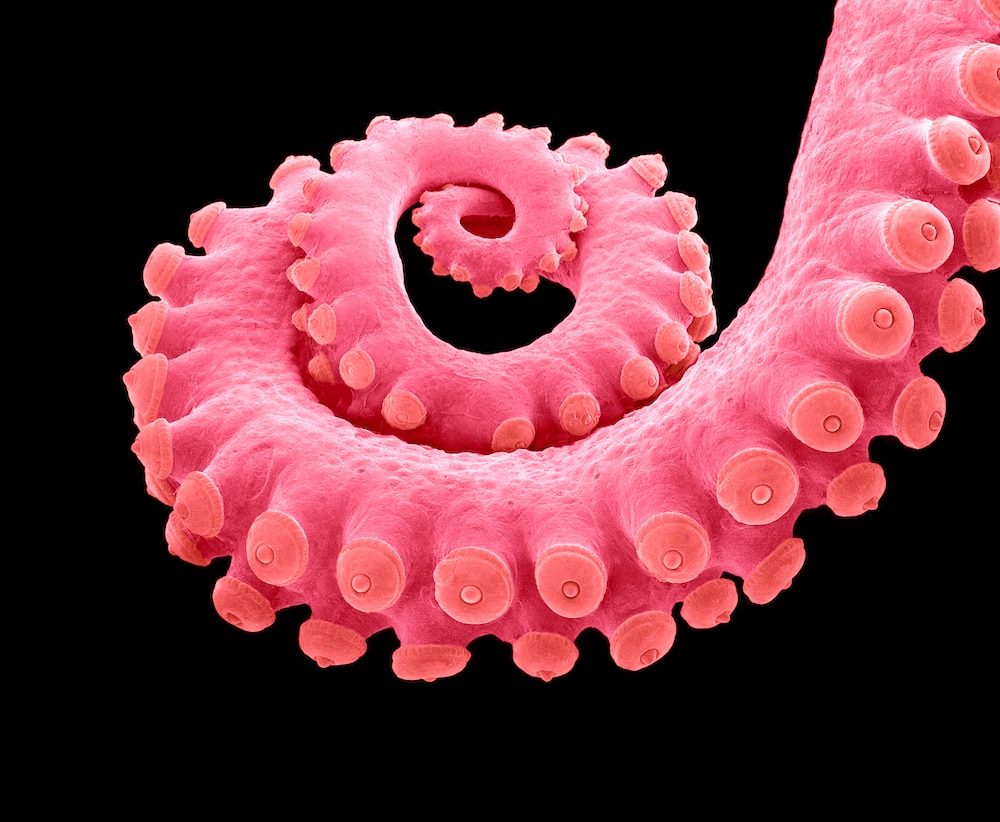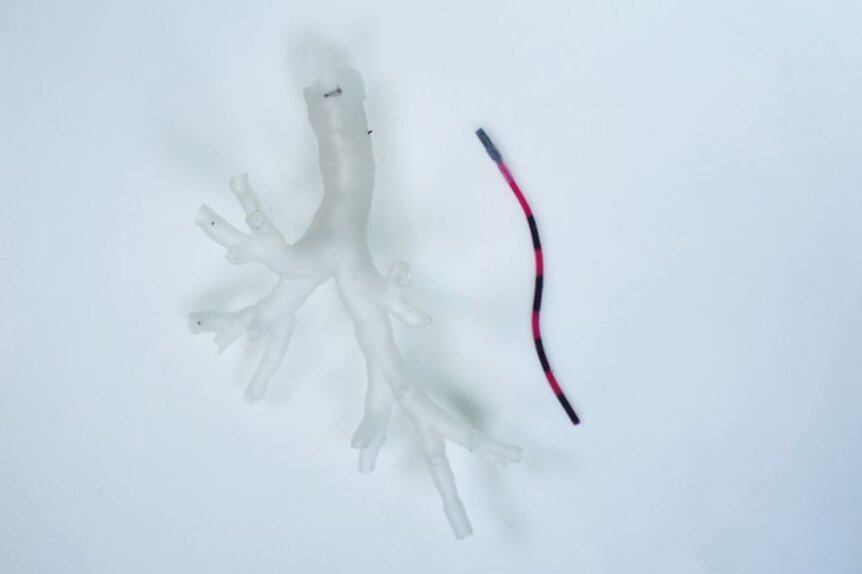Create a free profile to get unlimited access to exclusive videos, sweepstakes, and more!
Tiny magnetic tentacle robots could get into our lungs, and that’s a good thing!
Generally speaking, you don't want tentacles inside your body. However...

Getting deep inside the body for exploration or treatment can often involve highly invasive surgeries which come with their own considerable risks. So, doctors are often interested in less invasive strategies using scopes and natural orifices or small incisions to get deeper inside the body.
Navigating to the bronchi inside the lungs, for instance, involves the use of an endoscope fed into the mouth and down into the lungs. There are limits, however. Because the lungs branch smaller and smaller, there comes a point when an endoscope can’t travel any further or is otherwise limited by its ability to articulate in the desired direction.
A new study by Pietro Valdastri and colleagues at the STORM lab at the University of Leeds, unveiled a new magnetically controlled robotic tentacle capable of navigating further into the lungs than ever before. Their findings were published in the journal Soft Robotics.
“The problem with existing bronchoscopes is they are four millimeters in diameter, they’re quite large. They can’t reach deep inside the bronchi,” Valdastri told SYFY WIRE. “To reach deeper you have to deploy a two-millimeter catheter, but it has no imaging and can only steer in one direction. You’re really limited in where you can go.”
The new device out of the STORM lab is a magnetically controlled robot which Valdastri likened to a snake, elephant trunk, or tentacle. It piggybacks on a conventional bronchoscope to get inside the lungs and then it deploys. It’s two millimeters in diameter, the same as a traditional catheter, but is capable of more robust navigation and shape manipulation, allowing it to wiggle into tighter spaces deeper within the lungs.
The team has been working for 15 years on the development of magnetically controlled instruments for medical use and previously developed a similar system which uses a single external magnet to deploy an endoscope for colonoscopies. The new, smaller machine uses two external magnets to create a magnetic field which moves the tentacle through the body.
“We use a soft silicon material with magnetic particles. Those particles are magnetized in a pre-planned way depending on the anatomy of the patient. Then we apply a magnetic field, so it conforms to the body,” Valdastri said.
The paper showcases a demonstration of the technology using a synthetic model of a human lung’s architecture, but the team has already moved onto next steps. They’ve demonstrated the technology inside the lungs of a human cadaver.
In practice, the process involves preliminary CT scans of a patient to identify areas of interest. The team uses those scans to reconstruct the bronchial tree and the lungs to build a map of where they want to go. An algorithm then determines how to magnetize the particles inside the tentacle and manipulate the external magnets to get the shape and movement they need.
“We’re using magnetic cylinders 3-inches in diameter and length. We have two of them which are manipulated by robotic arms. They’re similar in strength to an MRI,” Valdastri said.
Once inside the body, the tentacle could be outfitted with a one-millimeter instrument channel for taking tissue samples or laser fibers for thermally treating cancerous tissues. Crucially, the technology isn’t limited to exploring the lungs. The aim of the lab is to develop foundational technology which could be used to navigate any part of the body we might want to reach.
“The first application is the lungs but we’re already thinking of cardiovascular applications and neural applications. Wherever we want to reach inside the human body with minimal invasion, that’s what we want to do,” Valdastri said.
The next steps involve testing the technology in a living animal, like a pig. Moving through living tissue presents an extra level of complication when compared to a model or cadaver because of respiration. The landscape moves as the patient inhales and exhales, which could pose a challenge to their system. But Valdastri is confident it’s a challenge they’ll overcome.
Tiny tentacles invading your body is usually the stuff of horror stories, but if the technology pans out it could help us get a better grip on deep tissue medical treatments.



























